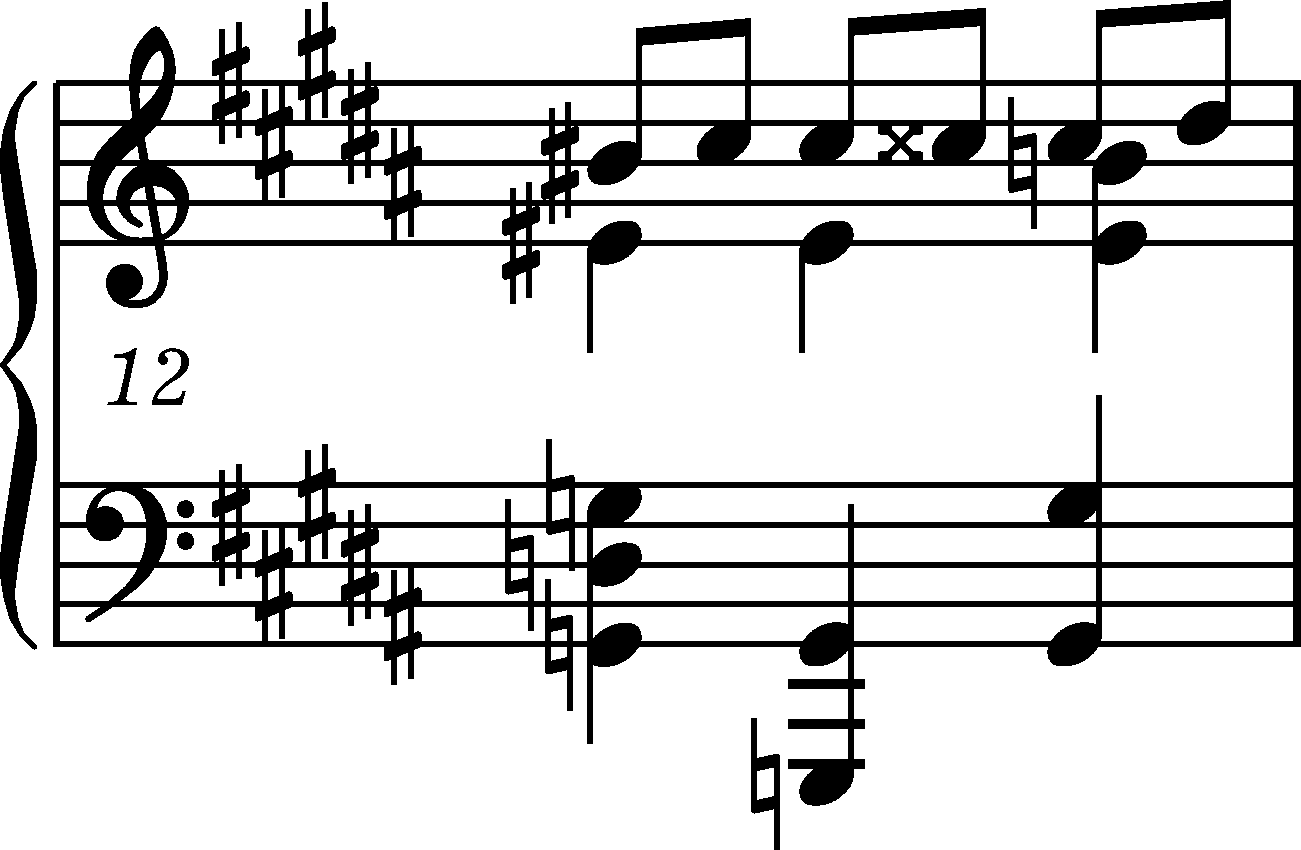



Pitch
|
b. 12
|
composition: Op. 28 No. 12, Prelude in G♯ minor
..
This bar was entirely crossed out in A and rewritten on adjacent staves – the R.H. above the crossing-out, while the L.H. – below. In the readable initial version, the regular steps of the R.H. quavers and the position of the 1st L.H. chord are preserved, while the f1 notes are written enharmonically as e category imprint: Corrections & alterations; Source & stylistic information issues: Omissions to cancel alteration , Corrections in A , Deletions in A , Accompaniment changes , Enharmonic corrections , Main-line changes |
|||||
|
b. 13
|
composition: Op. 28 No. 12, Prelude in G♯ minor
..
In the main text we add cautionary sharps before f category imprint: Differences between sources; Editorial revisions issues: EE revisions |
|||||
|
b. 15
|
composition: Op. 28 No. 12, Prelude in G♯ minor
..
The bottom note of the R.H. bottom voice on the 2nd crotchet is written too low in FC, as a result of which in GE1 it was interpreted as an e1. The patent mistake was corrected in GE2 (→GE3). category imprint: Differences between sources issues: GE revisions , Errors of FC , Errors repeated in GE |
|||||
|
b. 17
|
composition: Op. 28 No. 12, Prelude in G♯ minor
..
The version of GE1 must result from the engraver's mistake. category imprint: Differences between sources issues: Errors in GE , GE revisions |
|||||
|
b. 23
|
composition: Op. 28 No. 12, Prelude in G♯ minor
..
The category imprint: Source & stylistic information |

 1:
1:  . The corrections had been performed before the performance marks were introduced – the crossed-out version did not contain the following elements: accent, staccato dots, phrase mark, dashes marking the range of crescendo and pedalling marks. The
. The corrections had been performed before the performance marks were introduced – the crossed-out version did not contain the following elements: accent, staccato dots, phrase mark, dashes marking the range of crescendo and pedalling marks. The  restoring b1 on the 3rd beat of the bar was also missing.
restoring b1 on the 3rd beat of the bar was also missing.